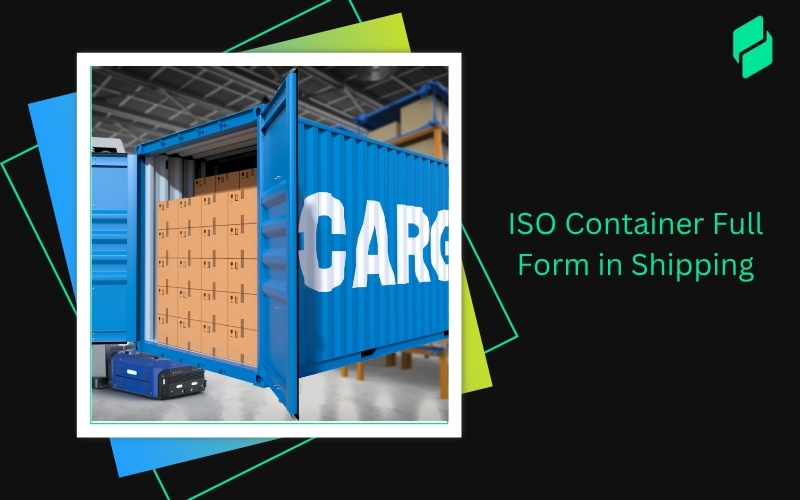Curious about the ins and outs of transshipment? In the realm of global trade, understanding the term meaning is essential.
Sometimes, direct transport to the destination isn't feasible or affordable. That's where this concept comes into play. Let's explore what does this means and how it operates in the complex landscape of global logistics.
Optimize your business: use unlimited savings with Pazago fulfilled now!
Get Started ->What is Transshipment?
Transshipment, alternatively referred to as trans-shipment or transhipment, involves the moving of cargo from one ship to another en route to its ultimate destination.
In this process, containers are offloaded at a designated site, reloaded onto a separate vessel, and then transported to the final destination. The site where this transfer occurs is commonly known as the transshipment hub.
Consider this structured example to illustrate the concept:
Origin: Mumbai, India
Destination: Manila, Philippines
Imagine this::
- No direct vessel is available from Mumbai to Manila.
- Cargo will be loaded onto a vessel bound for Singapore.
- Upon reaching Singapore, the cargo will be unloaded.
- Cargo will then be reloaded onto a ship destined for Manila.
In this case, Singapore acts as an intermediary hub, facilitating the transfer of cargo between vessels for onward delivery to Manila.
Importance of Transshipment in the shipping industry
- Efficiency Boost: It helps shipping companies use their ships and routes more efficiently by consolidating cargo at central hubs.
- Reaching Remote Places: This hubs help goods reach distant places by being middlemen.
- Flexibility: Ships can change their routes easily, avoiding delays or problems like bad weather.
- Speeding Things Up: Sometimes, using it makes delivery faster, especially if there's no direct route to a place.
- Connecting Different Types of Transport: This hubs connect ships, trains, trucks, and planes, easing global movement.
Now that we've got our heads around the importance, let's dive deeper into how this whole process plays out in real life.
Process and Reasons

1. Process
Let's break down the process by using a simple example:
Example:
Origin: Shanghai, China
Destination: Los Angeles, USA
- Arrival of Cargo: A ship carrying goods from Shanghai arrives at a port in Singapore, where it will be transferred to another ship.
- Unloading: Workers unload the cargo containers from the ship using cranes and move them to the port area.
- Storage (Optional): Some containers may be stored in warehouses near the port if needed.
- Documentation: Officials check the paperwork for the cargo to make sure everything is for the next leg of the journey.
- Loading: Once cleared, the containers are loaded onto another ship bound for Los Angeles.
- Final Destination: The ship sails to Los Angeles, where the cargo is unloaded and sent to its final destination.
In this way, it helps move cargo smoothly from Shanghai to Los Angeles, using Singapore as a hub along the way.
2. Reasons
It is a common practice in the shipping industry, driven by several key reasons:
- Absence of direct connections between ports: When there's no direct or affordable air, land, or sea link between the origin and destination ports, this becomes necessary.
- Challenges with large vessels: It is opted for when the destination port faces issues like low tide or the inability to accommodate large vessels, prompting the transfer of containers to smaller ships.
- Cost-effectiveness: While direct shipping may be pricier, it offers cost savings for freight forwarders, despite potentially longer transit times.
- Intermodal transportation: Combining multiple modes of transportation, such as rail and sea, necessitates this to move cargo effectively from one point to another.
- Political or legal constraints: To circumvent trade embargoes or regulatory restrictions, it is employed to sidestep legal or political limitations on certain types of shipments.
Alright, we've seen how this works and why it's used, but let's peel back another layer and explore the broader picture—its legal, economic, and sometimes shadowy aspects.
Legal, Economic, and Illegal Aspects
This is a pivotal aspect of global trade, encompasses a spectrum of legal, economic, and illegal dimensions:
Normal Legality and Part of World Trade
- It is a standard practice in global trade.
- It follows regulations set by organizations like the International Maritime Organization (IMO) and the World Trade Organization (WTO).
- Proper documentation and customs procedures ensure transparency and legality.
Risks of Smuggling and Illegal Activities
- This hubs are vulnerable to exploitation by criminal networks.
- The Smuggling of drugs, weapons, and other illicit goods is a concern.
- Increased surveillance and cooperation among law enforcement agencies are essential to combat illegal activities.
Economic Benefits and Cost Implications
- It streamlines supply chains cuts transportation costs, and expands market access.
- It promotes economic growth and trade efficiency.
Regulation Changes and Management Improvements
- Transparent regulations are needed to promote fair competition and mitigate risks.
- Investments in technology and infrastructure are necessary to enhance efficiency and security.
- Collaboration among stakeholders is crucial for managing this effectively.
This isn't a one-size-fits-all operation; let's take a look at how it changes its stripes in different scenarios.
Transshipment in Different Contexts
1. Container Ports or Terminals: Mechanisation, Standardized Containers, and Performance Metrics
- Mechanisation: Mechanisation means using machines and equipment to handle cargo quickly and efficiently at transshipment terminals. This includes cranes, conveyors, and other automated tools that make loading and unloading cargo faster and easier.
- Standard Containers: Standard containers are uniform-sized containers that fit on ships, trucks, and trains. Using standard containers makes it simple to transfer cargo between different modes of transportation. It saves time and ensures smooth movement of goods.
- Performance Metrics: Performance metrics are like scorecards that help track how well this operations are running. They measure things like how fast ships are loaded and unloaded, how long containers sit in storage, and whether deliveries are made on time. Monitoring these metrics helps improve efficiency and meet customer needs.
2. At Sea: Fisheries and Bulk Products, Legal and Illegal Activities
At sea, it is common for fisheries and bulk product transportation.
However, it also leads to illegal fishing activities. Illegal, unreported, and unregulated (IUU) fishing is a global problem, extracting an estimated 11 to 26 million metric tons from the oceans each year. It's crucial to work together internationally to address IUU fishing and safeguard our oceans.
3. Break-of-Gauge: Cargo Translated Between Different Rail Gauges
Break-of-gauge it involves transferring cargo between different rail gauges, enabling seamless rail transportation across networks. It promotes intermodal connectivity and trade facilitation, enhancing logistical efficiency and reducing transit times.
So, where does all this action happen? Let's zoom in on the world stage and spotlight the top players.
Top 5 Busiest Transshipment Ports in the World

Here's a roundup of some of the major ports worldwide:
1. Port of Singapore: Connectivity and volume of vessels
With connections to over 600 ports in 123 countries, the Port of Singapore welcomes approximately 130,000 vessels annually, making it the world's busiest hub. Around 20% of the world's shipping containers pass through this port.
2. Port of Shanghai: Volume of containers and strategic location
As the busiest port globally, the Port of Shanghai saw a 3.6% year-over-year increase in container volumes, totaling 32.14 million TEU from January to August this year. Linked with the Yangtze River, it serves as a vital hub for China's foreign trade.
3. Port of Shenzhen: Consolidation of ports and technological hub
Comprising ports like Yantian, Chiwan, Dachan Bay, and Shekou, the Port of Shenzhen thrives due to its proximity to major tech companies and its status as a global technology hub, often dubbed China's Silicon Valley. It handles significant cargo volumes thanks to its strategic location and technological advancements.
4. Port of Busan: Feeder vessel network and transshipment services
Situated in South Korea, the Port of Busan boasts a robust feeder vessel network connecting ports in Russia, China, and Japan. Its services attract large cargo volumes, making it one of the world's busiest ports.
5. Port of Hong Kong: Historical significance and facilities
Despite its decline compared to neighboring ports in recent years, the Port of Hong Kong remains a crucial hub. It offers extensive facilities for ship repair, maintenance, and dry-docking, emphasizing its enduring importance in global maritime trade.
Keeping track of all these moving pieces sure sounds like a jigsaw puzzle. Let's break down how businesses stay on top of their game.
Tracking and Managing
Let’s suppose your company is shipping goods through all the ports that we discussed above. A major concern for you now would be to keep track of all these shipments and make sure they reach their destination on time.
1. Engage a Freight Forwarder
A proficient freight forwarder manages all aspects of your shipment and keeps you informed about any potential delays. Acting as intermediaries between carriers and shippers, they maintain strong relationships with both parties and procure containers to streamline shipments.
Our platform provides a secure space for shipping companies to connect and transact containers. Each company's public profile showcases ratings and customer reviews, aiding you in selecting the right partner for your business.
2. Maintain Proper Documentation
Keeping comprehensive documentation, including the Bill of Lading and customs documents, is essential for effective tracking. Proper documentation facilitates monitoring the progress, location, and status of your shipments throughout the transshipment process.
3. Track via Carrier's Website
You can track your containers by visiting the carrier's website and entering your Bill of Lading (BOL) number. However, this manual tracking method can be time-consuming and repetitive for multiple shipments, as you cannot store container information on the website.
4. Electronic Automatic Tracking
Electronic or e-tracking systems offer real-time updates on container movement, making them highly effective for tracking. With automatic updates on shipment location and status, e-tracking ensures efficient monitoring of your shipments.
Learn more about the Pazago tracking tool, a top choice for keeping tabs on your containers. Keep reading to find out how it can help you.
Got questions? You're probably not alone. Let's tackle some common curiosities around transshipment.
Transshipment: Common FAQs
What is transshipment, and why does it happen?
It is moving cargo from one transportation method to another during its journey. It happens when direct routes aren't available or to save costs.
How is this different from direct shipment?
Direct shipment goes straight from origin to destination. It involves transferring cargo between different modes or ports along the way. Direct is faster, but this offers more flexibility.
Which transshipment hubs are busiest, and why are they important?
The busiest hubs include Singapore, Shanghai, Shenzhen, Busan, and Hong Kong. They're vital because they connect different regions, streamline logistics, cut costs, and boost global trade.
Conclusion
In summary, around 90% of global trade relies on water transport, yet securing a direct route to the destination port can be challenging.
Transshipment offers a practical alternative in such cases. So, understanding this is vital for navigating global trade. It enables seamless transfer of goods and addresses challenges like limited direct routes.
Hubs like Singapore and Shanghai play key roles in facilitating trade. With technology and transparency, businesses can ensure efficient delivery. It's essential to regulate this to maintain trade integrity and protect marine resources, fostering economic growth and international collaboration.


.png)








